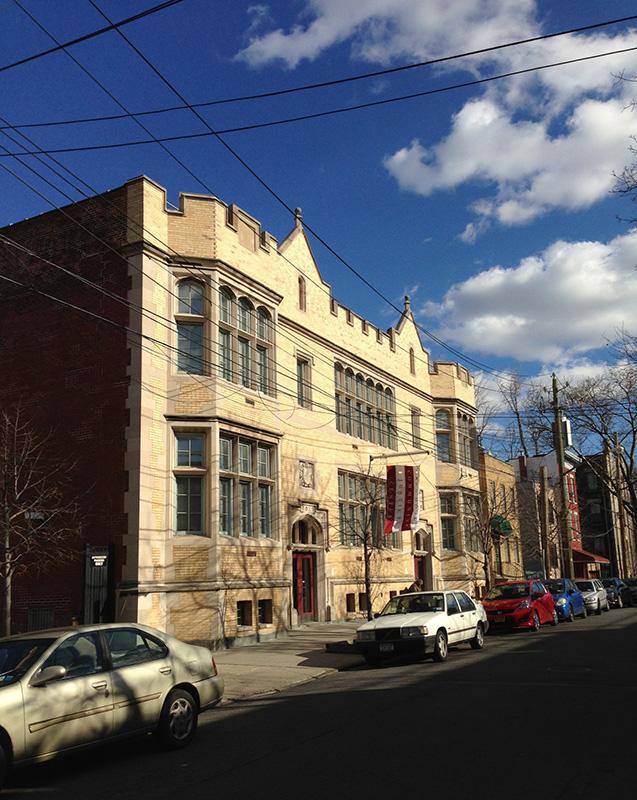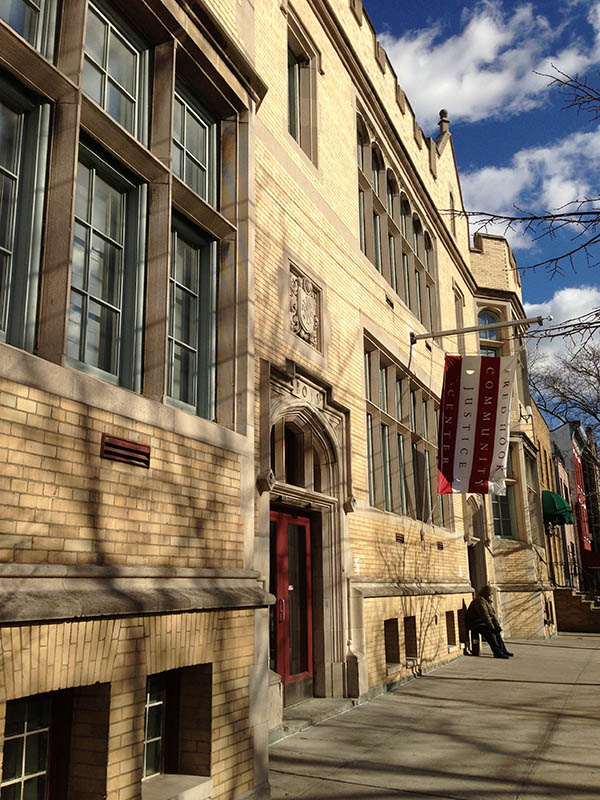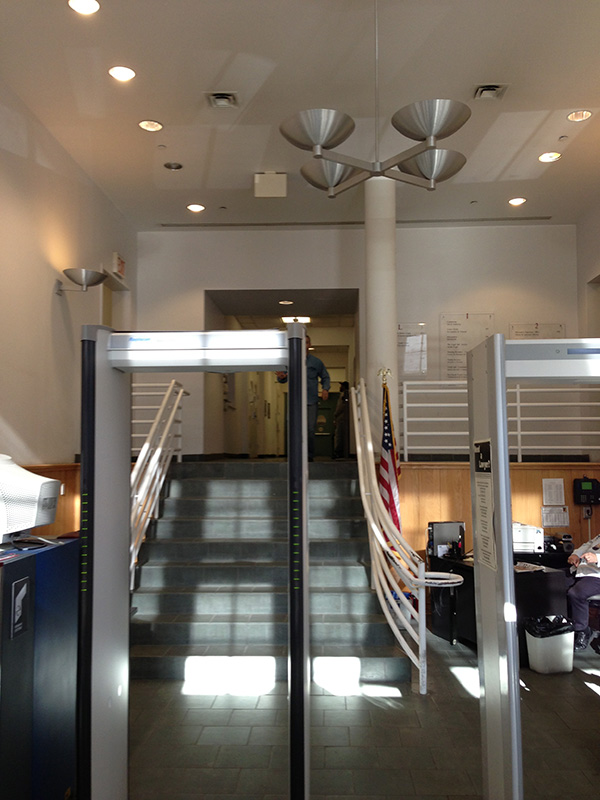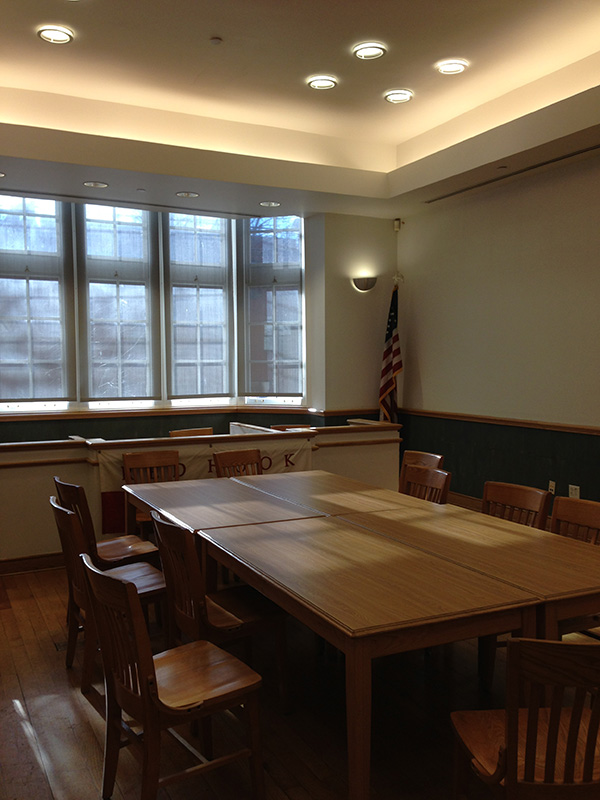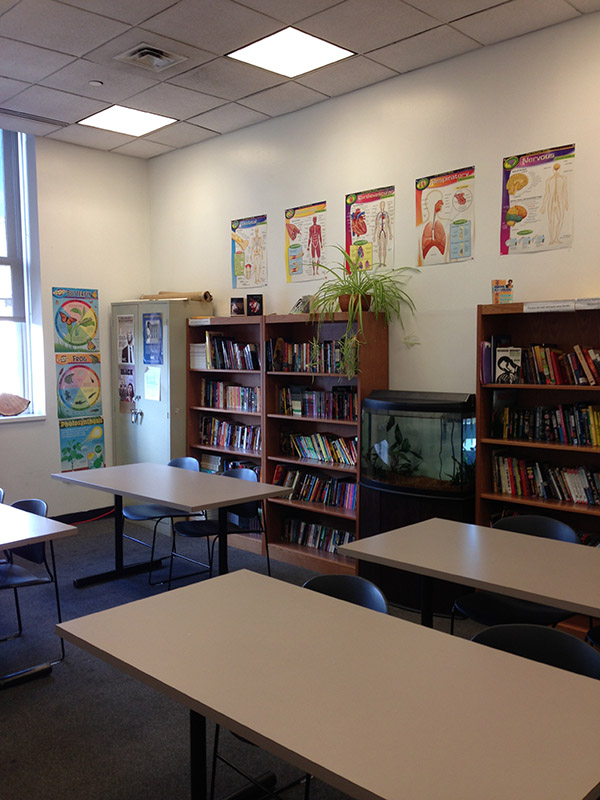Red Hook is part of Brooklyn, NY, but it doesn’t feel like the rest of the borough. It’s isolated along the water, cut off by a highway. I had to take several buses to get here, because the subway doesn’t go to Red Hook. It feels a little like an island.
When New York’s crime wave reached its peak in the late 1980s, Life magazine called Red Hook “the crack capital of America.” And it just got worse: In 1992, a devoted school principal here named Patrick Daly was shot and killed. Red Hook residents say that was a turning point; they knew they needed to take collective action. With the help of the district attorney and several judges, they established the Red Hook Community Justice Center, an experimental court people hoped would rebuild a sense of community and maybe turn around a generation of lost youth.
A decade later, it’s thriving. Adam Mansky, the director of operations for the Center for Court Innovation, worked with residents to select a site back in 2000. Everyone agreed an abandoned Catholic school at the center of Red Hook was the best choice—though it took some vision.
“When we first came to look at this building, it was filled with wild animals. There were crack vials everywhere; people had stolen every possible fixture. So [the residents] wanted to see something positive done to restore this space,” Mansky says.
The school has huge windows with lots of light, and high ceilings. The stone façade still has a pair of side doors labeled “boys” and “girls.” Inside, the residents could design a courtroom that cares. Mansky says, “The traditional vocabulary of a court has been things designed to create sense of awe and gravitas by a litigant and respect for the law, things like dark wood, marble.” In other words, they’re intimidating.
The Community Justice Center is still a courthouse. There are cops everywhere. You have to put your things through X-ray scanners to get in. But every room is designed with a touch of humanity, even the jail.
“First and foremost, there are no bars,” notes Julian Adler, the project director. “We use shatterproof glass, and there’s natural light, which you would not find in traditional holding area. There’s a private bathroom with a partition. In most holding areas it’s a public bathroom, which is not ideal.”
No, those bathrooms are usually a hole in the ground.
“It’s still a holding area. You’ve been produced in handcuffs—it’s not an experience anyone wants,” Adler says. “But we try to restore some dignity to the process and to the extent that we can under the situation, treat you like a member of our community and hope that the next time you come to the justice center, you come through the front door, not back door.”
The courtroom also has bright windows, light-colored wood, white walls—and one more important detail. “We consciously lowered the height of the judge’s bench,” Mansky says.
Judge Alex Calabrese loves it. “The judge’s bench is actually lower than most people, so I’m often looking up to people!” he laughs.
Calabrese is a stocky, energetic guy who is street-wise and book-smart. After “Superstorm” Sandy flooded Red Hook, the judge was out in full force.
“I mean, he was out there with the people,” says Albert Barnes, a long-time resident who works at the justice center. “He was going to apartments to make sure people were taken care of. He was checking on the seniors. He came to my apartment to make sure I was OK and my family’s OK.”
I saw that kind of compassion while Judge Calabrese held court. I wasn’t allowed to record in the courtroom, but the Judge let me sit behind him. At one point, he was questioning a woman arrested for heroin. He asked if she wanted to get clean. That question surprised me.
Julian Adler says, “There’s a lot of research on the efficacy of drug courts and other problem-solving courts, and a lot of it does come back to the relationship between the judge and the defendant through conversations like that. It doesn’t surprises me that he intuitively asks those kinds of questions, because that’s what a good clinician would ask in drug treatment. And he’s asking those questions from the bench.”
After half an hour, Calabrese turned around asked if I had any questions. At a loss for words, I asked why he was being so nice. I’m not the first person to ask that.
“Many times, I’ve had defendants come to me after their process and say, I’ve never been treated like this before by police or court officers. Why is everyone so nice?” says Adam Manksy. “And I’ve also had court officers come to me and say, I can’t believe how nice public is, they are always so respectful and aren’t trying to escalate things.”
“The general philosophy here is to treat people with respect, and it goes further than sounding like a nice thing for anyone to say,” says Judge Calabrese. “It helps people be in compliance.”
Compliance is whether a defendant actually follows the judge’s orders. Normally, courts are divided into civil, family and criminal law. Judge Calabrese is trained in all three, which gives him flexibility. Also, in New York State, the age of criminality is 16, which means that teenagers can have vastly different sentences based on a dividing line that can feel artificial.
“So if you’re 15 and 364 days old, you’re sent to family court. If you’re one day older, you’re sent to criminal court,” says Mansky. “The consequences can be very significant, and in fact we’re involved in a large project to divert more of the young people who are in criminal right now, out of it.”
The judge has many services at his disposal. He can send offenders to drug treatment or anger management. For minor offenses like graffiti, disorderly conduct or truancy, the Judge can send teenagers to a non-binding youth court, run by Sabrina Carter. “I got involved because I’m from the Red Cook community,” she explains. She joined youth court at the age of 14 in 2002.
Youth court is held in what used to be the principal’s office of this Catholic school. A petite African-American girl plays the role of judge, administering the oath to a motley group of teenagers. The pledge is this: I solemnly swear or affirm to keep everything I hear during this youth court session to be completely confidential.
This is not your typical after school activity. These kids are real do-gooders. Some of them want to be lawyers when they grow up. “Every role like in a regular court is fulfilled,” Carter says. “We have a bailiff, the judge, jury members that could range from six to eight members, a youth advocate which is a defense attorney in this case and a community advocate which would be like the DA or the prosecuting attorney.”
Today’s case is about a 10th grader who skipped school. The community advocate is a well-spoken girl who argues that truancy harms a school’s reputation. The youth advocate is a boy who never looks up from his notes. He admits the 10th grader has a poor GPA, but she’s working towards improving her record and reaching her goal: to join the Army. The jury questions her for 15 minutes. They adjourn for a verdict, and come back to recommend that she take a motivational workshop.
“Sometimes the kids are like, ‘Whew, you know, great! It’s a different kind of court. It’s a second chance. I don’t have to see real judge,’” says Carter. “Whereas others are like, ‘This is a joke! There are other teenagers, why are they doing to judge me and tell me what I’m doing wrong?’”
But Judge Calabrese trusts them 100 percent. He boasts, “The only proof you need is that their compliance rate, which is a voluntary compliance, is higher than my compliance rate where I can send people to jail if they fail to do what they need to do. Their compliance is over 90 percent; mine is over 70 percent. The traditional court, by the way, is 55 percent.”
Compliance is one way to measure if the community justice center approach is working. Another is cutting down the rate of incarceration. “You know, we’re a country that incarcerates one in every hundred people,” Calabrese adds. “I sent significantly less people to jail here, and yet we hold people accountable. It’s also been shown that when people go to jail at the Justice Center, they actually go to jail longer.”
Community courts are popping up around the U.S. and beyond. A judge in Liverpool, England, actually modeled his court after the one in Red Hook. At the very least, Judge Calabrese hopes he can inspire other courts to take a fresh look at how they work.
“When I was in the traditional court and didn’t have a lot of these services, I found it frustrating because I could take care of the case the legal way, but I knew I wasn’t really getting to the problem that brought the offender to court,” he says. “And unless you get you get to that problem, that person is going to keep recycling through the court system time and time again.”
—
Read more about the Red Hook Community Justice center at the Red Hook Community Justice Center website. You can also read Red Hook Community Justice Center News and Updates.


